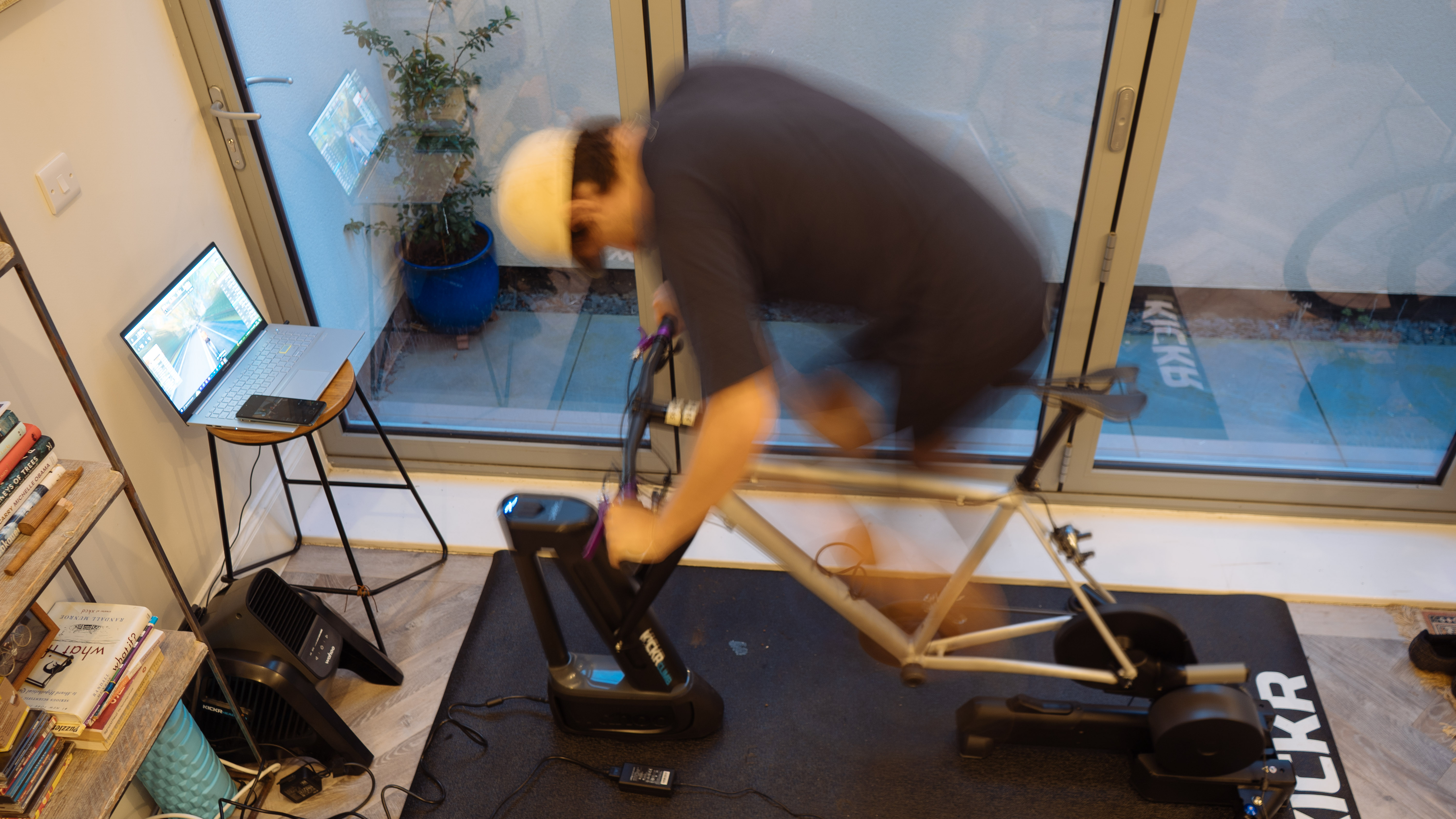Safety versus seconds – The dilemma of aid station chaos in the professional fields at Unbound Gravel 200
'If you're not pushing the envelope then you're off the back' says Stetina of the current gravel race feed zone scenario
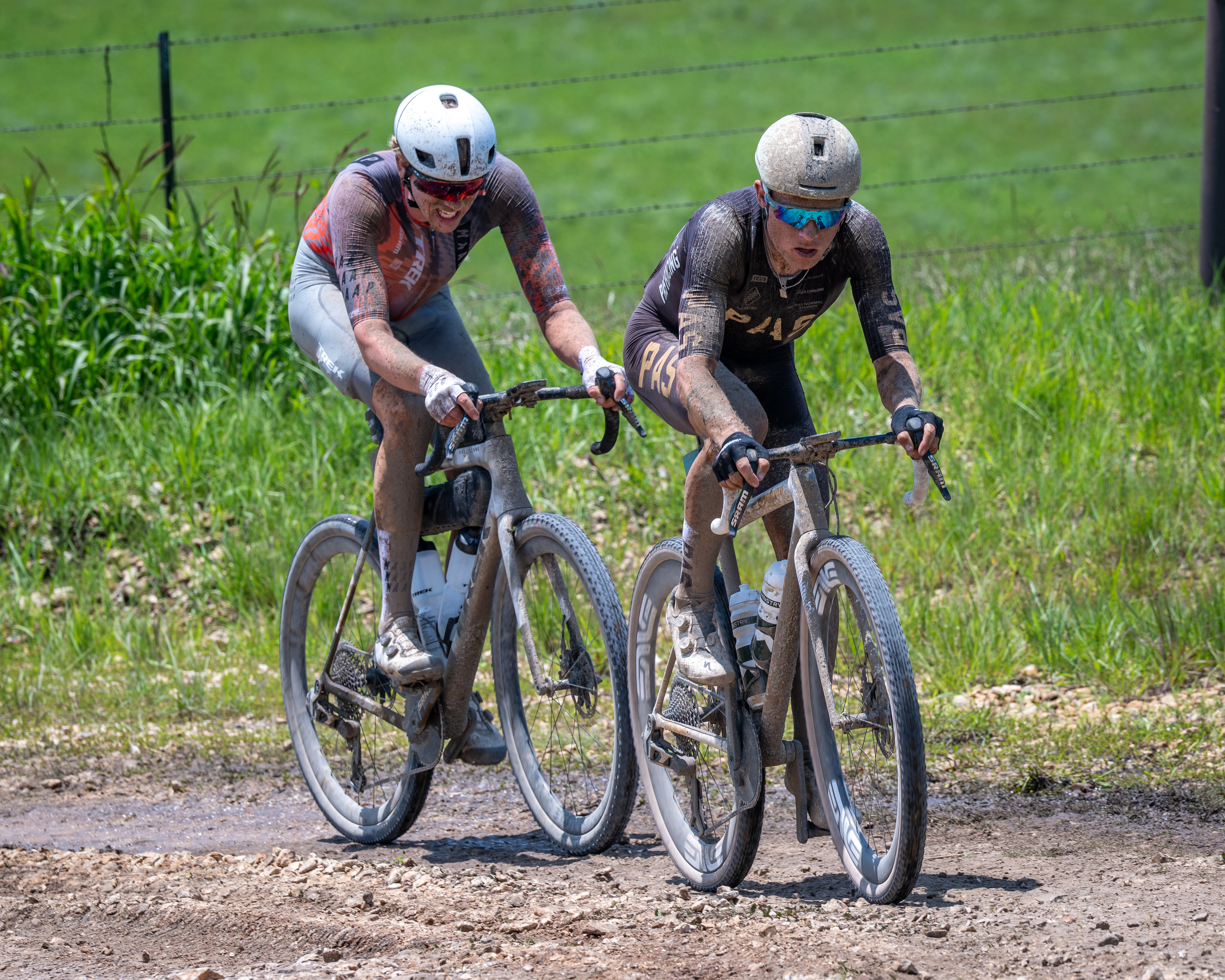
A smooth ride at Unbound Gravel has nothing to do with hard-packed roads in the Flint Hills but everything to do with planning and luck, from sound equipment choices to a succulent supply of fluids and food. A perfect gravel day is rare in Kansas but, with deeper fields for the elite races in the 200-mile race and high stakes on the line, riders now have to battle for every second.
Aero bars are long gone and drafting among separate divisions has been outlawed, so will the scrutiny of water bottle and hydration pack refills be next? Access to support in the official checkpoint areas certainly appears to be pushing its way up the agenda as territory where the 'spirit of gravel' may undergo another round of regulation. It's not about hindering the forward progress of riders, but providing a safer environment for the athletes, support crews and volunteers.
"It felt like chaos, sounded like chaos and was a total sensory overload. People were yelling at riders, music was blasting from every tent and my adrenaline was absolutely through the roof," Lauren De Crescenzo (Factor-The Feed) told Cyclingnews, referring to checkpoint one at the 70-mile mark when the front groups of elite women entered the area.
When the front bunches of elite rider passed through Alma for the first checkpoint, there were still more than 1,000 amateur riders on the course headed that way. The tiny hamlet was filled with support staff, tables and tents for the official Crew-for-Hire Program as well as approved teams. Another 78 miles later was checkpoint two at Council Grove, and that community packed in more support infrastructure for 200-milers plus the 100-milers. There were also two water oasis locations on the 200-mile route, mainly used by the amateur riders.
De Crescenzo, who won Unbound 200 in 2021 and was sixth this year, was not alone in her assessment of the checkpoints, which are the only two places on the 200-mile route for riders to access outside support. Multiple riders described the checkpoints at Unbound Gravel 200 as "F1 pit stops".
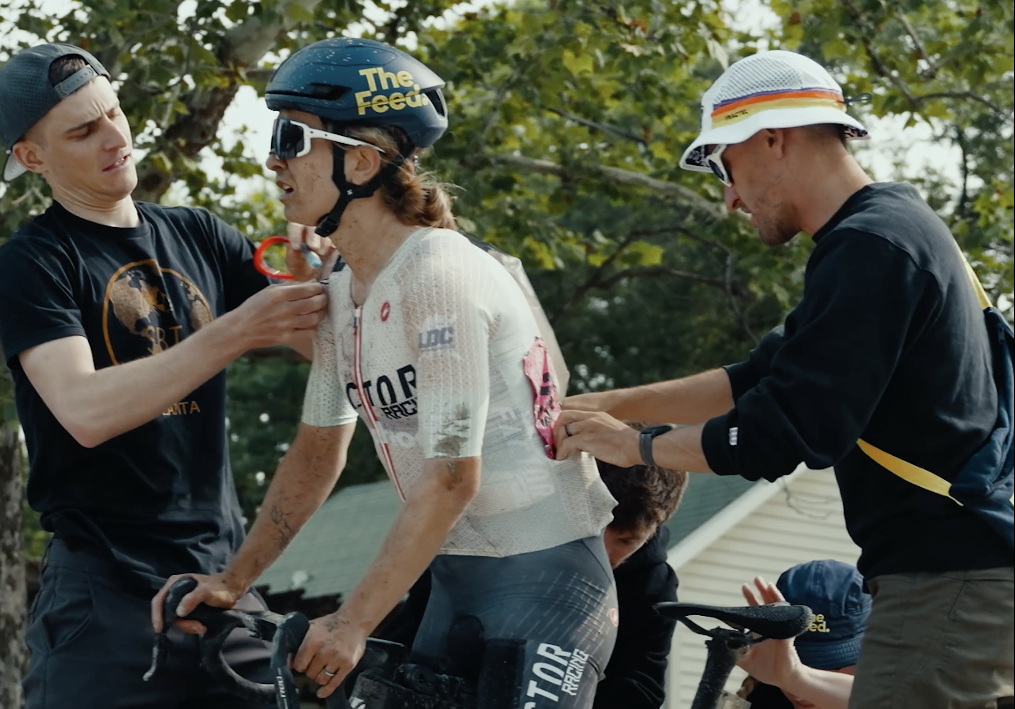
Peter Stetina (Canyon) is one of those riders who has seen a metamorphosis of the 'rest stops' for the elite fields since his first appearance in 2019.
"The vibe was generally to collect your stuff, be quick and roll out. If you are too slow, you're gonna have to chase. It was not the F1 pit stop vibe that it is now. That's been a natural evolution. It's evolved in sync with how gravel competition has evolved," the men's podium finisher in 2019 and 2021 told Cyclingnews.
The latest race content, interviews, features, reviews and expert buying guides, direct to your inbox!
"In 2019, the first year the WorldTour pros were coming – with myself, Alex [Howes] and Lachy [Morton] – I had a turkey and cream cheese sandwich ready for me. I was like a bite in and I was the last one there [in the aid station].
"But now, with the depth of the field and the level of competition and having to find an advantage wherever you can, riders are able to push themselves further and longer than than ever and it is quickly evolved to riders taking [supplies] on the fly. The amount of logistics that go into saving 20 seconds is kind of ridiculous.
"But at the same time, you know, closing a 20-second gap can take you 10 miles of chasing, if it's an inopportune moment, and that can be a bullet that you need later in the day so it's ultra crucial."
Two aid stations across 200-miles of remote, rough and hilly prairielands makes advanced planning critical. This year the sun-baked course stepped up the need for increased fuel, especially when it came to hydration, as temperatures rose into the high 80s Fahrenheit, around 30°C.
"Having a well-planned fueling strategy, and an experienced aid zone crew was crucial for ending up at the podium," Torbjørn Røed (Trek Driftless) told Cyclingnews after his third place in the elite men's race on May 31.
"The rarity of the aid zones and distance between them makes them important. If you don’t get everything you need, you will suffer badly before you get a chance to refuel again. Also because the event is so big, the aid zones are longer and messier with more riders and more support, especially at aid [station] two where we catch 100-mile riders at the same time.
"I was happy with my original plan, but it warmed up even faster than expected and I was able to communicate to my aid zone crew to add another bottle of water for aid station two. My plan was to never stop and I was able to grab bottles/pack/gels from three different Trek crew members each aid and an extra water dump bottle from a fourth member at aid two."
His Trek teammate Paige Onweller has had mixed experiences at the checkpoints, and was keenly aware that "there's a lot that can go wrong in the feed".
In 2024 she said she "panicked" at the first aid station when she realised everyone was going through so fast and she lost her focus, forgetting to take all her food from a table. "So I started riding, panicking because the group was going ahead and I had to go back. You have to have nutrition at Unbound."
She chased back into the lead pack last year and finished on the podium in the nine-rider sprint finish. This year she used a conservative plan with the feed zones, her mantra "smooth is fast". It was the rest of the race – "a day of mechanicals, bad legs and a lot of mental fortitude just to finish" – that saw her cross the line in 15th, but it was still a solid showing among the Life Time Grand Prix field to remain in the top 10 after two races.
"So riders have to make a decision – if you're risking it to save a little bit of energy, five or 10 seconds, or are you being safer, more conservative and avoiding some of the carnage," Onweller said. "So, stay calm and try not to rush it."
What does an Unbound pit stop look like?

The support setups vary by the elite riders, with De Crescenzo using a personal three-person crew – including her husband, coach and one mechanic – who drove to the two checkpoints in a Honda CR-V hybrid vehicle. The setups provided by bigger teams like Canyon and Trek shared resources among the elite men's and women's riders.
"I used all my experience to help all the other Canyon riders and we bounced ideas off each other. I think it was clear that it had to be a no-stop race for the men and if you did a no-stop you have a small advantage, but the higher probability was that if you did stop you would have to chase quickly. Myself and Peter Vakoč were able to soft pedal out of aid station number one," said Stetina, with his long-time mechanic "Big Tall" Wayne Smith the anchor of the pit crew.
"There's everything that Wayne and I plan for, your perfect scenario, but everything is with an asterisk because you have to have contingency plan B – plan C if you need to grab extra plugs or CO2, if you need a wheel change, or if it's a bad mud year and the bike needs full power washing. It's a spectrum. Unbound rewards meticulous planning, logistical foresight, being ready for anything."
This year he needed a contingency plan and stopped at checkpoint two for a wheel change, but used the opportunity to "slam a Coca-Cola" and with new rubber recovered from 37th to 20th.
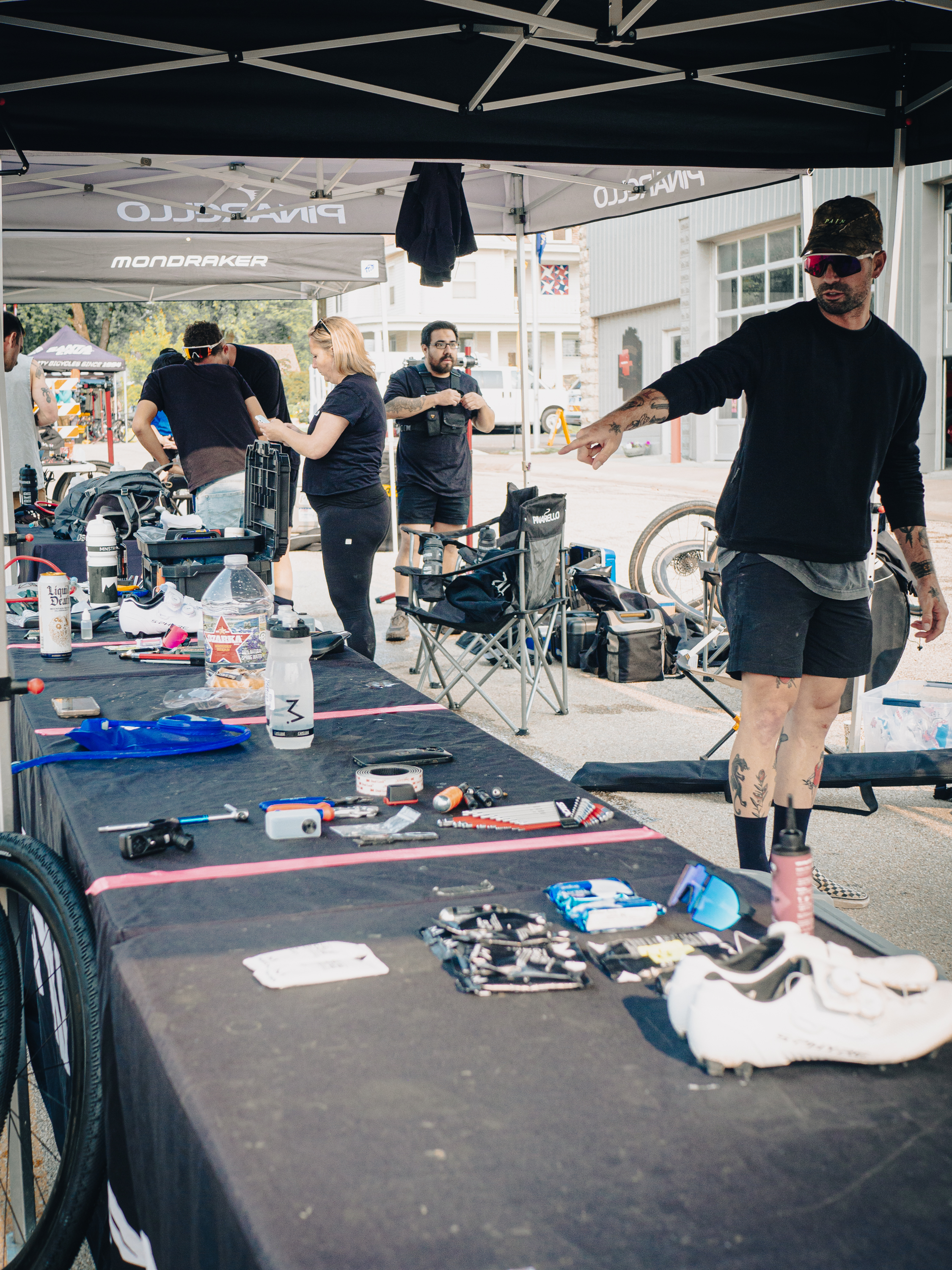
There was a buzz in 2023 when defending champion Sofia Gomez Villafañe (Specialized Off-road) used a four-person crew to clean her bike and get her refuelled at an Unbound checkpoint. That is now standard, and Røed used the choreographed sequence to his advantage, though he admitted there wasn't much traffic in the aid stations since he was in a three-rider group at Alma and a five-rider group at Council Grove.
"Yes, all four of us at Trek Driftless [Onweller, Haley Smith, Russell Finsterwald] used the same aid crew. We had our two mechanics, team director and [at least] two helpers," Røed recounted.
"I didn’t stop at all going through aid one – I first grabbed a hydration pack from crew at aid one, then a bottle from crew at aid two, then a feed bag from crew at aid three with gels, bottle, and an ice sock.
"At aid two, I also didn’t stop and got bottle from crew number one, bottle from crew number two, feed bag from crew number 3 with gels, two more bottles, and an ice sock. Then from crew number four I got a water dump bottle."
Onweller said she went with a conservative approach for her passes through the checkpoints.
"Trek offered great support that weekend and they know how important it is to have fast feeds. There was an option to station multiple team members across the feed to do numerous hand ups but I opted for a quick stop and refuel.
"I threw off my bottles and pack prior to seeing the crew and then multiple members put bottles on the bike and threw the hydration pack on my arm and then I was off. It was less than 15 seconds but I was still chasing afterwards," Onweller said.
"The other option is faster but I feel it is more risky and dangerous to take a musette with 2L of bottles and then another hand up with your pack. This requires a lot more coordination and also increases risks of missing one of the hand offs; it also requires multiple team members which many riders do not even have access to."
The refuel edge
Stetina recalled the 'blow up' in 2022 at SBT GRVL where harsh words were exchanged among riders in the men's front group about whether pros should use hydration packs. Several riders, Stetina included, slowed and stopped at a mid-race feed zone to refill water bottles while those riders with hydration packs pressed on, some feeling they set off at a faster pace than when the group approached the refueling area.
After the mixed reaction to 'hydration strategy', Stetina admitted that forgoing a rest area and never stopping in an 140-mile race had never been a consideration. "The sport has changed," he said then, and he repeated that after his sixth ride at Unbound Gravel 200 this year.
"It's so competitive now, careers are made on it," he said of Unbound and other big off-road races. "The influx of the professional attitude has been, if it's not expressly written it's allowed. So I think every year you see some sort of progression. It's a growing pain and I think the aid stations are the easiest spot to play with that rule."
Hydration packs are now standard at endurance events like Unbound Gravel, but the frantic pace in and around the area to replenish them may be the next hot spot for more rules and regulations.
Some riders noticed that in advance of the authorised area for refueling in Alma, one team set up shop outside the checkpoint and riders threw off their hydration packs before even entering the approved zone. The same team had a staff member circulating at the checkpoint on a bicycle, providing hand ups to riders as they sped through.
"This is obviously dangerous, but since it is not explicitly written in the rules, those riders had no implication to their time or place. I would anticipate the rules would have that spelled out more clearly next time," Onweller said when asked about the one team looking to give riders an advantage at the pit area. "It's part of the growing pains in gravel, which most of us are used to."
She said getting a musette filled with all liquid and other items is definitely "a scramble" and can lead to safety concerns in high-traffic areas. The chaos can come from not just the large number of people in the designated areas but also riders on the verge of cracking so not focused on their surroundings.
There have been more crashes in the feed zones, recently a bad hand-off to Payson McElveen at Sea Otter Classic Gravel resulted in a fractured hip and a missed start at Unbound for recovery.
"Unbound is unique because often you have to carry four litres of fluids, so a two-litre pack and two bottles. We're seeing some riders aren't even stopping, they're just pedaling through and taking multiple musettes. They used to be where everyone stops, get the stuff they need and then roll through. But it's pretty much full-gas now," Onweller said.
Life Time, which owns and operates Unbound Gravel and Sea Otter Classic Gravel, recognised that the utilisation of aid stations had shifted for pro fields and they were concerned to keep an "experience that is both safe and fair" for all riders sharing the areas.
"As the event and the sport of gravel continue to evolve, we understand that our elite athletes are looking for any edge. And our goal is to create an experience that is both safe and fair for everyone," Michelle Duffy Smith, VP of Events and Retail Marketing at Life Time, told Cyclingnews.
"We are actively evaluating what changes need to be implemented moving forward to ensure a protected and positive experience, and aim to provide specific guidelines on what is and is not permitted. The intent is to protect the elite race, and also for our broader field of participants, who have traditionally shared the same crewing areas."
Duffy Smith added that Life Time does not hesitate to evolve the rulebook as the sport continues to grow.
"I'll be the first one to put my hand up and say I missed the gravel feed zone 'days of yore'," Stetina concluded. "It's clear that Unbound, specifically, and high-end gravel is an elite sport, and you're kidding yourself if [you think] it's not. All elite sport is, if you're not pushing the envelope then you're off the back, that's universal. So with that, I think it's just obvious and its pragmatic, [that's] where things are."
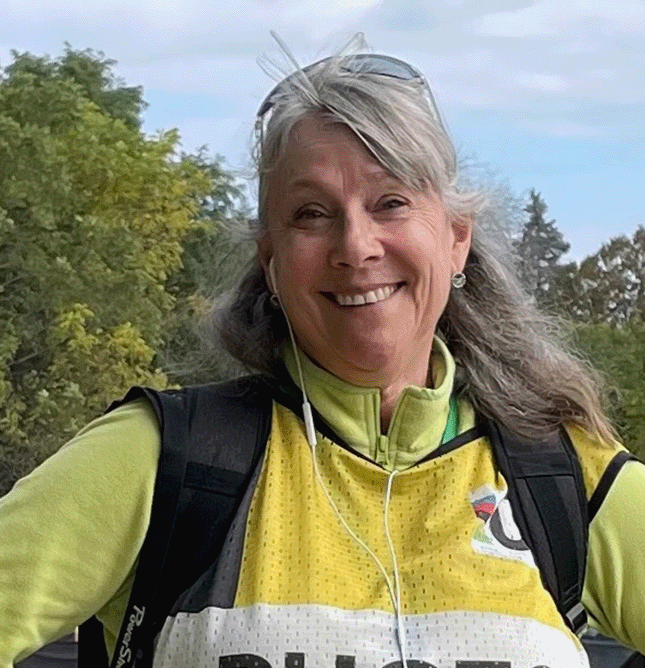
Jackie has been involved in professional sports for more than 30 years in news reporting, sports marketing and public relations. She founded Peloton Sports in 1998, a sports marketing and public relations agency, which managed projects for Tour de Georgia, Larry H. Miller Tour of Utah and USA Cycling. She also founded Bike Alpharetta Inc, a Georgia non-profit to promote safe cycling. She is proud to have worked in professional baseball for six years - from selling advertising to pulling the tarp for several minor league teams. She has climbed l'Alpe d'Huez three times (not fast). Her favorite road and gravel rides are around horse farms in north Georgia (USA) and around lavender fields in Provence (France), and some mtb rides in Park City, Utah (USA).
You must confirm your public display name before commenting
Please logout and then login again, you will then be prompted to enter your display name.
